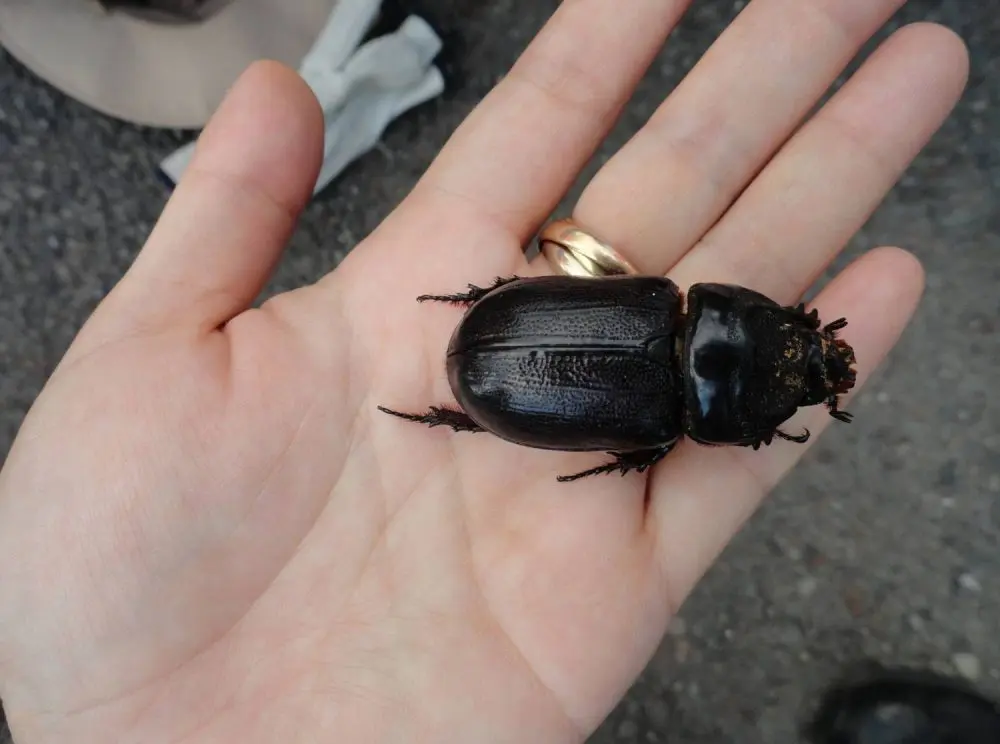The Hawaiʻi Board of Agriculture took bold steps Tuesday to keep the coconut rhinoceros beetle from reaching Molokaʻi, blocking the transport of all green waste and gardening materials to the island for one year.
The new rule prevents the movement of materials regardless of the infestation status of the place of origin. State plant quarantine branch manager Jonathan Ho called it unprecedented.
Two previous interim rules only limited materials leaving Oʻahu and did not include new infestation sites on Kauaʻi and West Hawaiʻi. The steps the board took Tuesday represent an escalation as the situation with the beetles and their destruction of coconut palms across the Main Hawaiian Islands grows more dire.
“These sorts of prohibitions have more often been applied to things coming into the islands. This sort of intra-island prohibition, that might be historic,” said Christy Martin, the Coordinating Group on Alien Pest Species program coordinator.
Molokaʻi residents and Hawaiian cultural practitioners Kunani and Ipo Nihipali proposed the interim rule in a petition sent to the department. Throughout the petition process the couple, both in their late 70s, traveled to Oʻahu to make the case to protect the island in person.
“The people of Moloka‘i spoke very clearly about how the coconuts on their island are not the same as coconuts on other islands,” said Sam ’Ohu Gon, an invasive species expert on the Plants and Animals Advisory Committee.
Kunani Nihipali had previously made the case that the beetle could impact the island’s cultural legacy, which is strongly rooted in agriculture, including imperiling Hawaii’s oldest royal coconut groves, planted by King Kamehameha V.
“The bottom line is niu is the tree of life for Polynesians, Hawaiians in particular,” he told Civil Beat in August, using the Hawaiian word for the coconut palms. “It carries us from life to death. It’s a part of every part of life.”
Although the plant quarantine branch made amendments to the Nihipalis’ proposed rules that would have greatly diluted the protections they sought, the outpouring of public testimony in support of the original rule allowed for it be pushed through intact.
Specifically, the new rule prohibits plants, soil, gravel, compost, wood, tree chips, mulch and other materials known to host invasive beetles from being transported to Molokaʻi, the last inhabited island within Maui County without a detection of the pest.
Kunani Nihipali said that he was happy to have their version of the interim rule accepted by the board, but noted that the work is just beginning to enforce it.
Stephanie Easley with the Coordinating Group on Alien Pest Species said she was pleased to see the petition process used and that, though it is open to everyone, it is rare that anyone takes advantage of it.
“The use of the petition process in this way is something I’ve never seen,” Easley said, “and for it to be successful is really beautiful and empowering.”
Story originally published by the Honolulu Civil Beat and distributed through a partnership with The Associated Press.
Photo credit: Hawaiʻi Department of Agriculture





